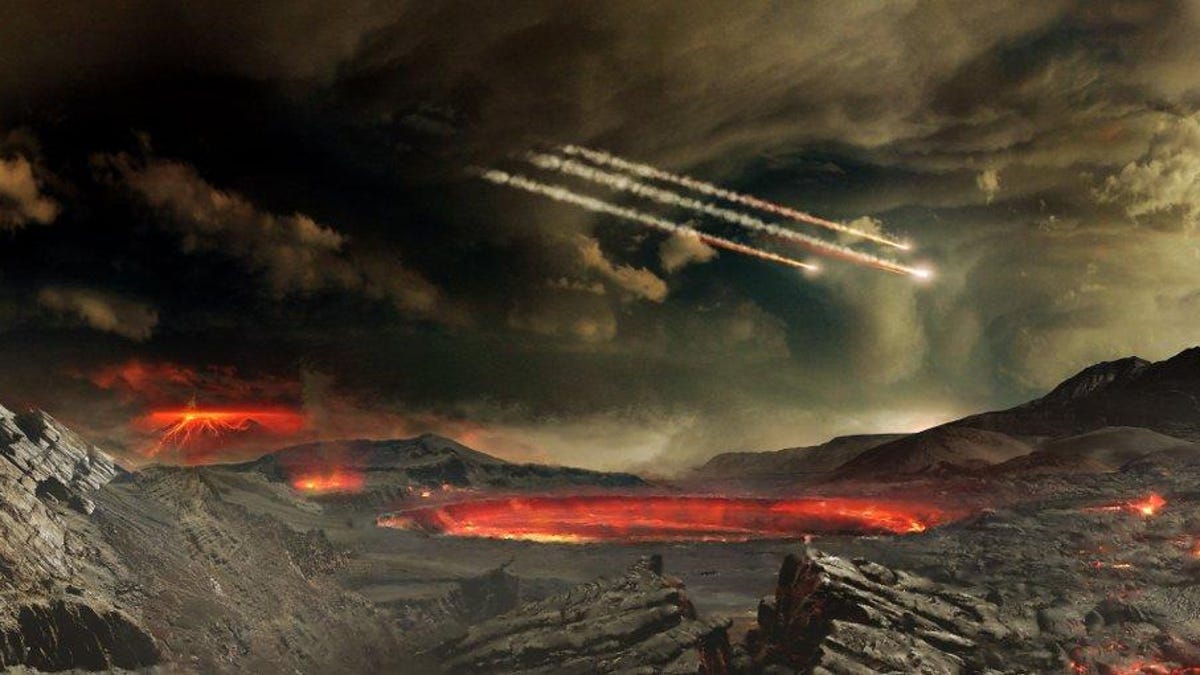Odds alien life exists boosted by oldest fossils on Earth
Microorganisms in an ancient rock show diverse life existed under harsh conditions on Earth like those seen on other worlds.

The surface of planet Earth 3.5 billion years ago was probably quite unpleasant, to put it mildly. There were frequent volcanic eruptions, almost no oxygen and higher chances than today of getting bombarded by large asteroids. Yet somehow a diverse group of life forms was already alive and kicking here, despite such seemingly inhospitable conditions, leading some scientists to presume that the same thing almost surely has happened on other planets as well.
An example of one of the microfossils discovered in an ancient rock.
New research published Monday in Proceedings of the National Academy of Sciences reports microscopic fossils in a 3.5-billion-year-old piece of rock from Western Australia are the oldest such fossils found -- and also the earliest direct evidence of life on our planet.
That makes for an intriguing enough headline, but the new research digs deeper into the nature of the tiny organisms and finds that they weren't all identical: some were primitive photosynthesizers, while others were producers and users of methane.
"This tells us life had to have begun substantially earlier and it confirms that it was not difficult for primitive life to form," said lead author and UCLA paleobiology professor J. William Schopf, in a statement about the research, adding that scientists can't yet be sure how much earlier life may have actually begun on Earth. "But, if the conditions are right, it looks like life in the universe should be widespread."
The organisms in the fossils would likely be poisoned by Earth's oxygen-rich atmosphere today, but they show life might tend to find a way to emerge in environments that would seem to us to be unlivable.
Primitive photosynthesizers like those found in the ancient fossils are thought to live where there is light but no oxygen, which describes the surface of Mars, among other places. The discovery that the earliest life forms here also included methane users is intriguing in light of the fact that Saturn's moon Titan may be covered with large seas of liquid methane.
The time period at which the microorganisms lived, some 3.5 billion years ago, is also interesting because it comes only a few hundred million years after the period known as the late heavy bombardment, when Earth is thought to have been pelted with large asteroids and other pieces of space debris hanging around the inner solar system.
In other words, the living conditions here were not great at the time and yet a diverse roster of organisms still popped up in a relatively short period of time, geologically speaking.
The next obvious question is that, if simple life forms can emerge this easily, shouldn't it also increase the odds that intelligent life forms have also evolved elsewhere? Schopf says the answer to that question is less certain but still promising.
"[This study] confirms it is not difficult for primitive life to form and to evolve into more advanced microorganisms," he explains.
You heard it here first, kids: The career of the future might just be in Martian paleontology, digging up ancient fossils on the red planet -- perhaps on the outskirts of Elon Musk's colony.
Solving for XX: The tech industry seeks to overcome outdated ideas about "women in tech."
Life, Disrupted: In Europe, millions of refugees are still searching for a safe place to settle. Tech should be part of the solution. But is it?

